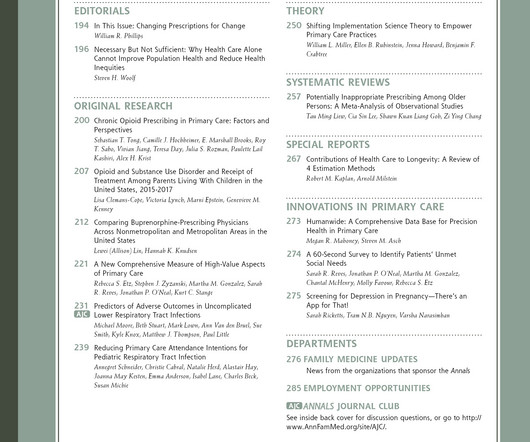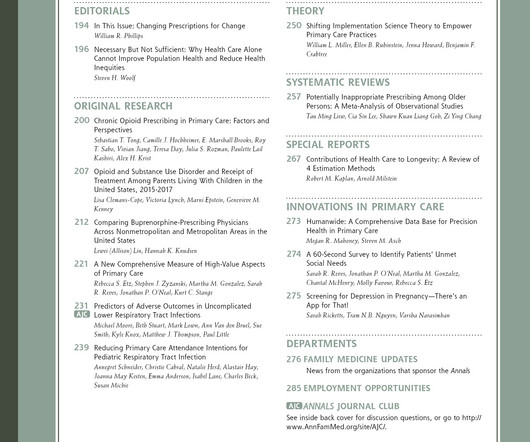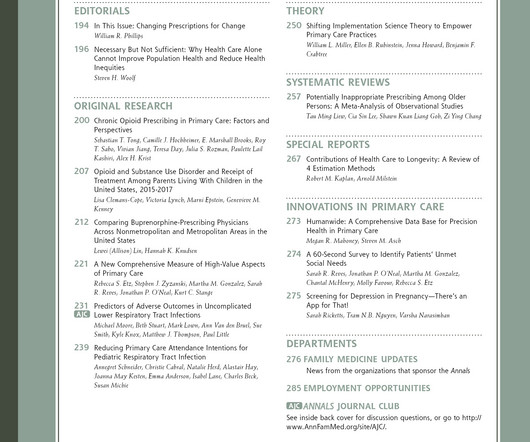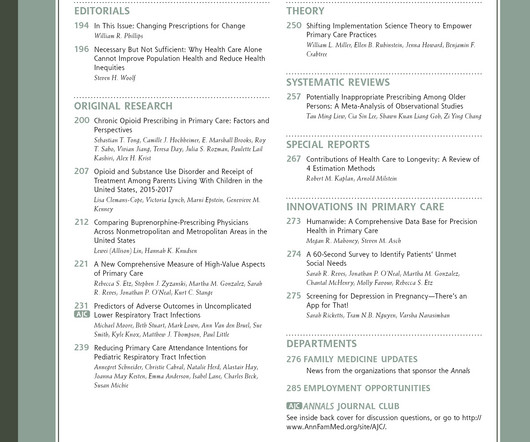Nested order panels for primary care medication and laboratory orders: adoption and impact on ordering efficiency [Health care services, delivery, and financing]
Annals of Family Medicine
NOVEMBER 20, 2024
Context: Electronic health record (EHR) order preference lists and order sets potentially improve efficiency but have limited utility in complex primary care settings. In Phase 1 (gradual implementation), 404 xOrders were released between 11/39/2020 and 9/25/2021. A one-time survey was also conducted.

















Let's personalize your content